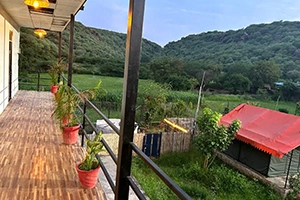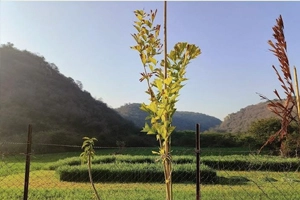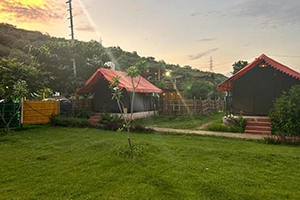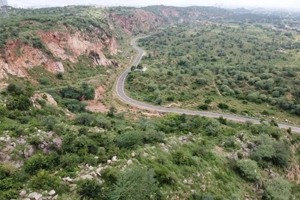10 Years Experience
Specialized in Camping
Trekking Details















The Leopard Trail is an adventure destination nestled in the Aravalli Hills near Gurgaon, Haryana, India. It's a perfect weekend getaway for people living in the bustling city of Gurgaon, offering a quick escape into nature with scenic beauty and a variety of activities.
Adventure enthusiasts can indulge in activities like trekking, hiking, cycling, and even off-roading on the rugged terrain. The trail is also perfect for a picnic in nature, where you can admire the Aravalli Hills and spot birds like peacocks, doves, and parrots.
After working up an appetite with your outdoor activities, you can unwind and enjoy a delicious meal at one of the on-site restaurants. Here are a few options:
The Leopard Trail is considered a safe spot for hiking within the Gurgaon area.
The leopard (Panthera pardus) is a spotted big cat belonging to the genus Panthera. They are known for their beautiful rosettes, powerful bodies, and elusive nature. Leopards are widely distributed across sub-Saharan Africa and parts of Asia, making them one of the most geographically widespread large cats.
Leopards have a slender and muscular build with a long tail. Their fur is typically a pale tan or yellow, covered in dark rosettes, which are clusters of spots that form a small circle in the center. These rosettes vary in size and density depending on the subspecies. Melanistic leopards, also known as black panthers, are a rare variation where the black fur obscures the rosettes.
Leopards are the smallest of the big cats, with males typically larger and heavier than females. Males can weigh between 68 and 159 pounds (30.9 and 72 kg) and females between 45 and 95 pounds (20.5 and 43 kg). Their body length ranges from 36 to 72 inches (92 to 183 cm) with a tail length of 26 to 40 inches (66 to 102 cm).
Leopards are adaptable cats and can thrive in various habitats, including rainforests, savannas, deserts, and even mountain ranges. They are excellent climbers and often seek refuge in trees, where they store their prey and raise their young.
Leopards are solitary predators and opportunistic hunters. They stalk their prey using their stealth and agility and can take down animals much larger than themselves, including antelopes, deer, monkeys, and wild pigs. They are also known to eat smaller prey like rodents, birds, and reptiles.
Leopards are nocturnal animals, meaning they are most active at night. They are solitary creatures and only come together to mate. Females raise their cubs alone in dens, typically caves, rock crevices, or thick vegetation. Leopard cubs are born blind and helpless, but they develop quickly and become independent by around two years old.
There are eight recognized subspecies of leopards, each with slight variations in size, coat pattern, and habitat preference.
Leopards are facing several threats in the wild, including habitat loss due to human encroachment, poaching for their fur and body parts, and conflict with humans over livestock predation. Conservation efforts are underway to protect leopards and their habitats.
Leopards are fascinating creatures with a vital role in the ecosystem. Their beauty, power, and adaptability continue to capture our imagination.